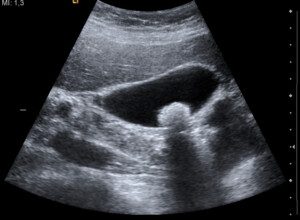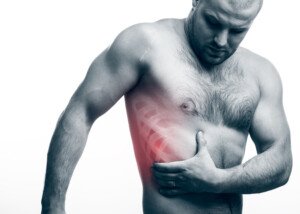Many people want to know if gallstone pain can be only mild, or is it always sharp and severe?
“Biliary colic is associated with right upper quadrant pain,” says Akram Alashari, MD, a trauma surgeon at Geisinger Medical Center in PA, and author of “THE POWER OF PEAK STATE.”
“It is due to transient obstruction of the cystic duct which drains the gallbladder.
“In the setting of complete obstruction, inflammation can occur (the development of cholecystitis), which is associated with a more severe, sharp pain.”
So if the obstruction is not complete, or only mild, then the pain may be only mild.
More on Biliary Colic Pain
This pain can be steady or of a come-and-go nature, caused by something blocking the flow of bile, a liquid that aids in fat digestion.
Bile is stored in the gallbladder. The presence of food in the stomach triggers bile to pass from the gallbladder through the common bile duct and cystic duct. It goes into the small intestine and mixes with the food contents.
The most common cause of biliary colic is gallstones when they block either duct.
This obstruction spurs the muscle cells in the bile duct to aggressively contract in an attempt to move the blocking stone — hence the pain. A little obstruction means mild discomfort. It may be an ache or even just a pressure sensation.
A complete obstruction will cause sharp severe pain.
Gallbladder-related pain isn’t always due to gallstones. A narrowing of the bile duct can also cause a blockage. A tumor, too, can result in an obstruction.
The image modality of choice to see what’s going on when gallstones are suspected is the ultrasound.
Risk Factors for Gallstones

An ultrasound shows a gallstone. Nevit Dilmen, CC BY-SA 3.0/creativecommons.org/licenses/by-sa/3.0/Wikimedia Commons
Though heredity and getting older are a few risk factors, others are modifiable.
• Cut back on fatty meals. Reduce the amount of “bad” fats, such as those found in baked goods. Replace donuts with nuts.
• If you’re obese, work on losing weight.
• Bear in mind that hormone replacement therapy can also raise the risk of gallstones, whose pain, by the way, may extend to the right shoulder blade.











































